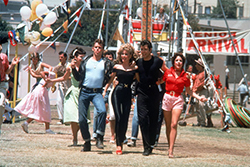Ah, the holidays. Famous singer Andy Williams described them in his legendary song, “It’s the most wonderful time of the year.” The “holidays” usually refer to a period in the United States of America that ranges from around Thanksgiving to New Year’s Day, that is filled with food, shopping, and gatherings of families across the country.
The dinner tables on holidays like Christmas are supposed to be filled with joyous conversation, laughs, and catching up with one another, but the mood of the table can change swiftly when one certain topic is brought up: politics.
Even the closest of families can have differing ideological and political views, which can quickly cause conflict at the dinner table. More recently, one of the most discussed and debated topics is climate change.
In simple terms, climate change means exactly what it sounds like: the changes in the climate. Weather patterns and temperatures are often the most talked about examples of climate change. Like most subjects, there are believers and non-believers about climate change. In a general view, the typical political categorization of believers and non-believers of climate change are liberals and conservatives, respectively. But there are conservatives, like myself, who do believe that the climate is changing. As much as you may not want to believe it due to your political allegiance or religious views, the fact is this: the climate is change is real and an immediate threat to our society.
Before taking Dr. Catherine Duckett’s (Associate Dean of the School of Science) Climate Science course, I was a climate change skeptic. I thought that there were changes happening in the climate, but I was not sure of the magnitude of sudden change or overall risks if the climate continues to change at the current rate.
Without Duckett’s course, I would still be a part of the misinformed population, a population that has way too many members. I strongly believe that is due to the lack of scientific communication and a lot of scientific denial in the United States of America.
I believe there is a problem with communicating scientific research results to the public in this country. As Ann Reid talked about in her Science Denial Playbook seminar, people adverse to scientific conclusions can use a multitude of different strategies to dissuade people from believing the same. She explained the four main techniques that science deniers use.
The first technique is to cast doubt on the science. This is something I would use to argue about a scientific subject in a debate format. This can involve “cherry-picking,” using the data that only supports your statements. Deniers also teach us to have unrealistic expectations of certainty. By saying scientists and researchers do not know how much exactly the temperature will rise so they are automatically wrong. In other words, that if you scientists don’t know everything about the subject, you know nothing.
The second technique is to cast doubt on the scientist. Deniers commonly say that the scientists are only doing the research for the money and to promote their “socialist” agenda. People who deny science will bring up the incorrect claims certain scientists made in the past so that they seem less credible to the public.
In the third technique, deniers will use it to instill fear in the public. An example that Reid gave in her seminar was that Adolf Hitler made people afraid so they believe his ideas.
The fourth and final technique is to appeal to fairness. This technique uses four parts: Part A being, to make an incorrect or misleading claim while Part B is to wait for scientists to refute that claim. A misleading claim that I often saw while watching the news last year during our frigid winter was that global warming must be false if the weather is so cold right now.
Part C is that once the scientist responds and denies the claim, the denier will say there is a controversy in the study therefore it cannot be trusted. The final part of the technique is to demand it be taught to the general public.
Deniers want the school curriculums to include both sides of the topic and the controversy about it, which seems to make it fair. This is known as “false equivalency.”
Appealing to the fairness in the media is often seen as two experts from differing sides that are given equal time to debate their opposing views, but as Reid said, “There are problems with fairness.” What she meant was that there are not always to sides two a topic like evolution or climate science, which can make it a false balance.
There are many aspects that contribute to the lack of scientists being able to communicate their research and claims effectively. One of those is the deniers of science that we see in the media and the way they are able to turn members of the public against the science. From this course, I am better prepared in case I am brought into a situation with a science denier.
I believe seminars like Ann Reid’s and others that share similar information should be more prominent around the country, especially in high schools and colleges. Having scientific information shared throughout the country will only benefit the people. But there are some important things that we may do as individuals.
We must recognize that the reason behind the denial of science is usually not about the scientific research, but that it goes against personal views and beliefs or may cause changes to our daily life or routine.
When faced with a denier, we must find out what the reason is behind their rejection and point them towards reputable sources with sufficient evidence about the subject. Finally, we can help them recognize the typical denial tactics that Ann Reid talked about.


